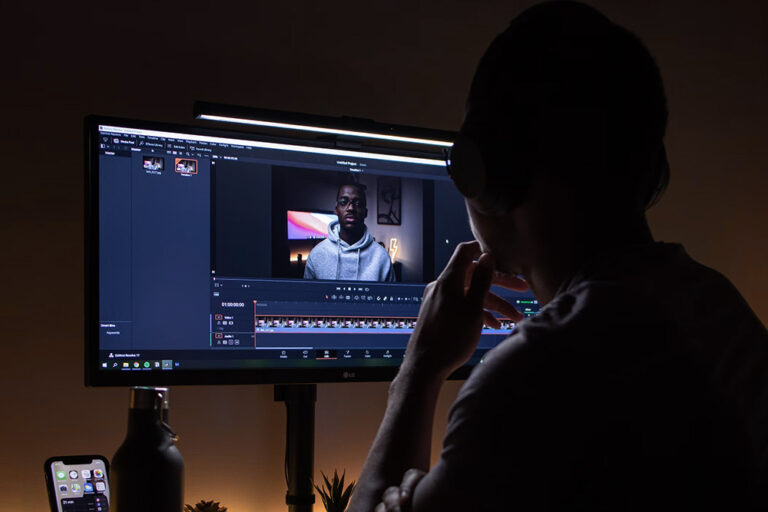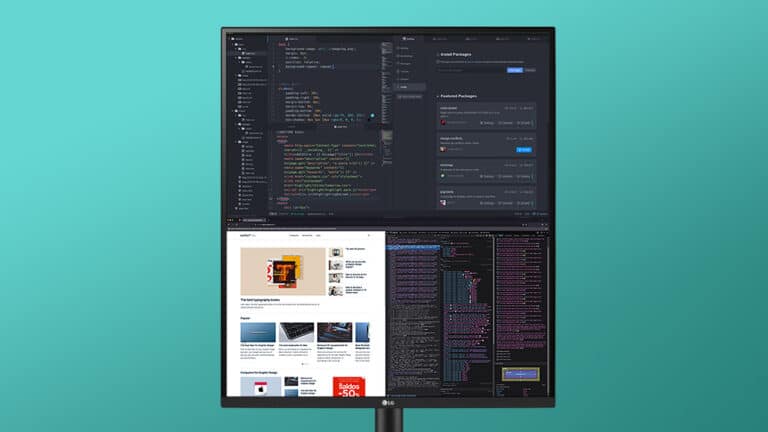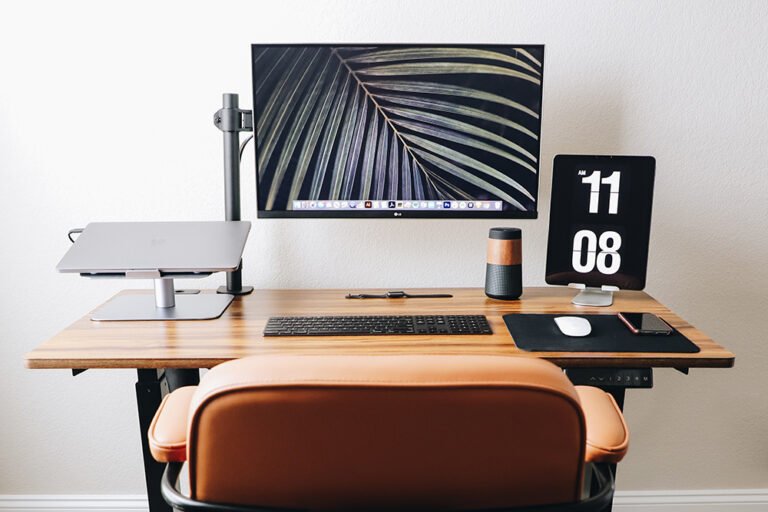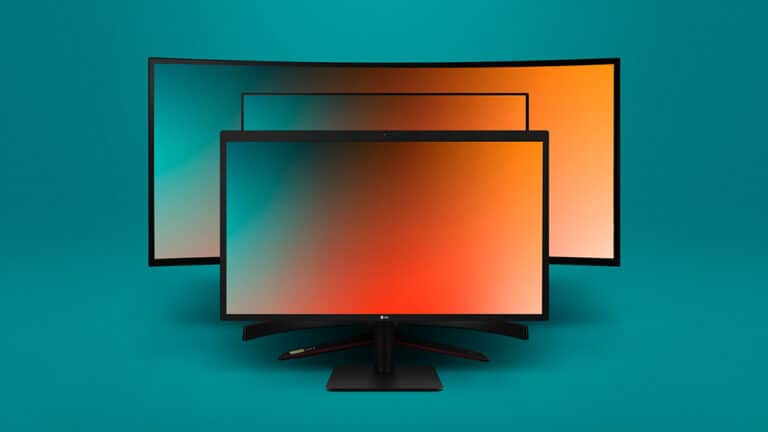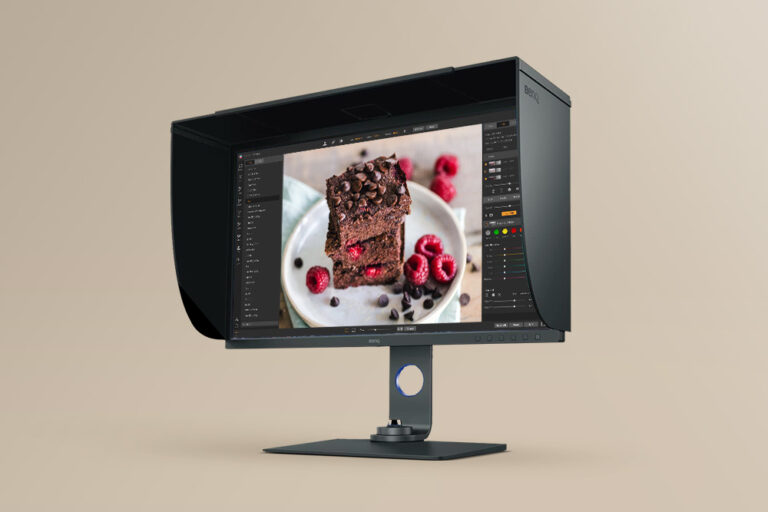Best monitors for photo editing
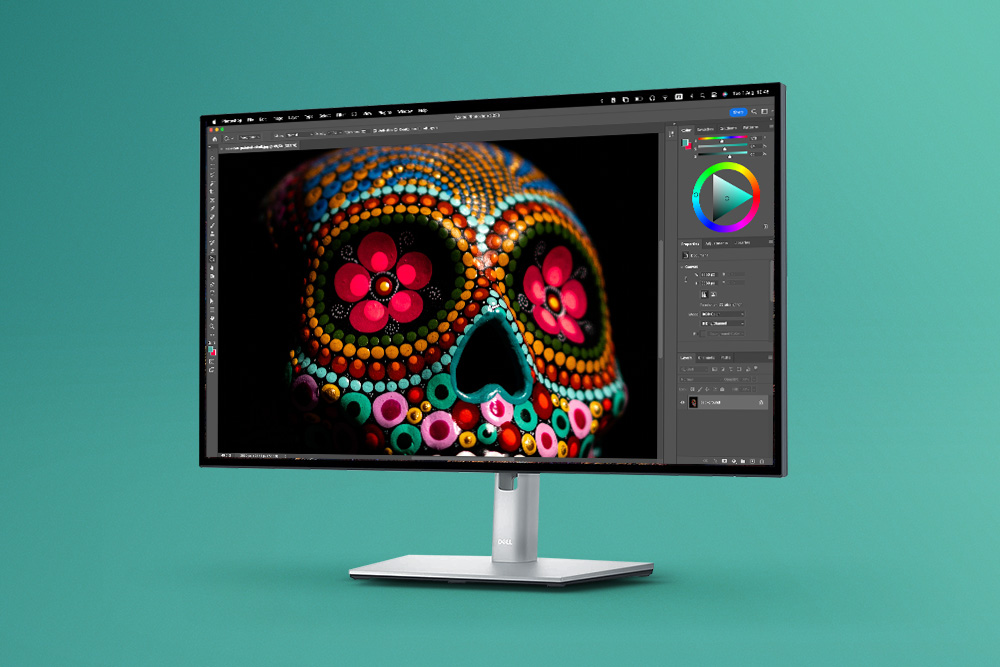
Finding a great monitor for photo editing is not easy, as sometimes the specifications are confusing and the prices are exorbitant.
The best monitors for photography combine quality and color accuracy, good definition and contrast, plus some functions or features especially useful for photographers.
I regularly have to retouch photographs for top brands and in various sectors, which has allowed me to test dozens of monitors of various brands and prices, of which, in this guide I bring you the best.
The 5 best monitors for photo editing in 2025
Last price update on 2023-06-08. We earn a commission if you make a purchase, at no additional cost to you.
The best monitor for photo editing
The Dell U2723QE is a monitor with premium finishes and design that brings together all the features that a photographer can want in a monitor for a very tight price, compared to what it offers.
We are talking about a 27″ 4K monitor with a super wide color gamut, reaching 98% DCI-P3 and 89% Adobe RGB. In addition, it has excellent contrast (2000:1), thanks to its 400 nits and IPS Black technology.
To give you an idea, photo monitors with similar professional features, such as the BenQ PhotoVue SW271C or the Apple Display (reviewed below) usually cost more than twice as much.
But its advantages don’t end there, its back comes packed with many more ports and connections than other competitors, such as the LG-27UP850-W (reviewed below), or the aforementioned Apple Display. As a result, you don’t need to take up all the ports on your computer or use additional adapters to connect other monitors, your cameras or external drives.
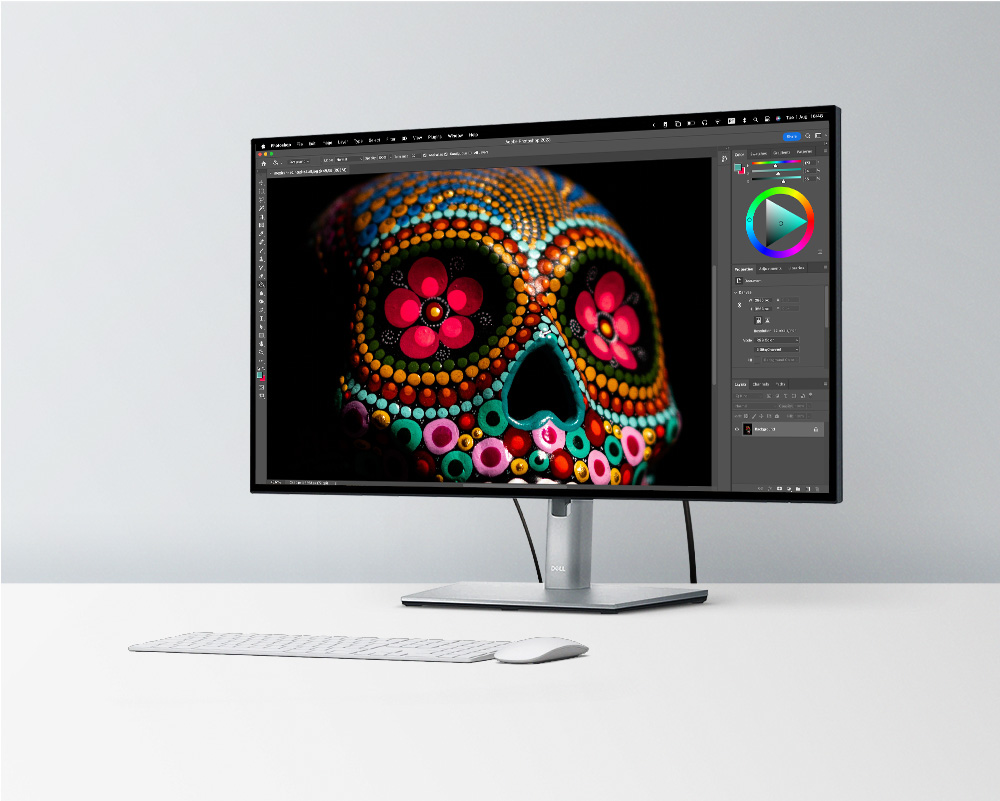
The best monitor for photo and video editing
The excellent coverage of the DCI-P3 spectrum (98%), its 27″ and 4K resolution, make the Dell U2723QE also the best choice if you work with video in addition to photo editing.
On the one hand, its size and resolution provide ample workspace to comfortably preview videos, file library and editing tracks, regardless of the video editing software you use.
On the other hand, its 98% coverage of the DCI-P3 spectrum allows you to not only adjust colors with the confidence that what you see matches the final result, but also to take advantage of your Mac screen, for example, as an additional monitor, since they have very similar coverage, brightness and contrasts.
The best monitor for photography and graphic design
If in addition to photography, you are a professional or passionate about design, this monitor has the best features for both worlds for the best price. For this reason, it is also the best monitor in our guide to the best monitors for graphic design.
Is the Dell UltraSharp U2732QE worth it?
There is no monitor on the market that offers professional features for photographers and image professionals, in general, for a more affordable price. It’s definitely my favorite monitor and worth the effort if you’re considering cheaper options.
2.BenQ PhotoVue SW271C
- Size: 27″
- Resolution: 3840 x 2160
- Color gamut: 99% Adobe RGB, 90% DCI-P3
- Panel type: IPS
Last price update on 2023-02-08. We earn a commission if you make a purchase, at no additional cost to you.
The best monitor for professional print photography
The big difference between the BenQ PhotoVue SW271C and the other monitors on this list is its 99% coverage of the Adobe RGB gamut, compared to 89% for the Dell U2732QE or 85.2% for the Apple Display.
In addition, BenQ includes exclusive software, called Paper Color Sync, which simulates the final print colors with great accuracy. It even allows you to simulate the type of paper and printer model to be used, and get a very accurate preview of the final result, so you can save a lot of time and money on test prints.
In conclusion, its accuracy when working with photographs intended for print media, is far superior to that of its competitors. However, this prioritization of the Adobe RGB spectrum is achieved at the expense of the DCI-P3 range, of which it only covers 90%, according to several tests.
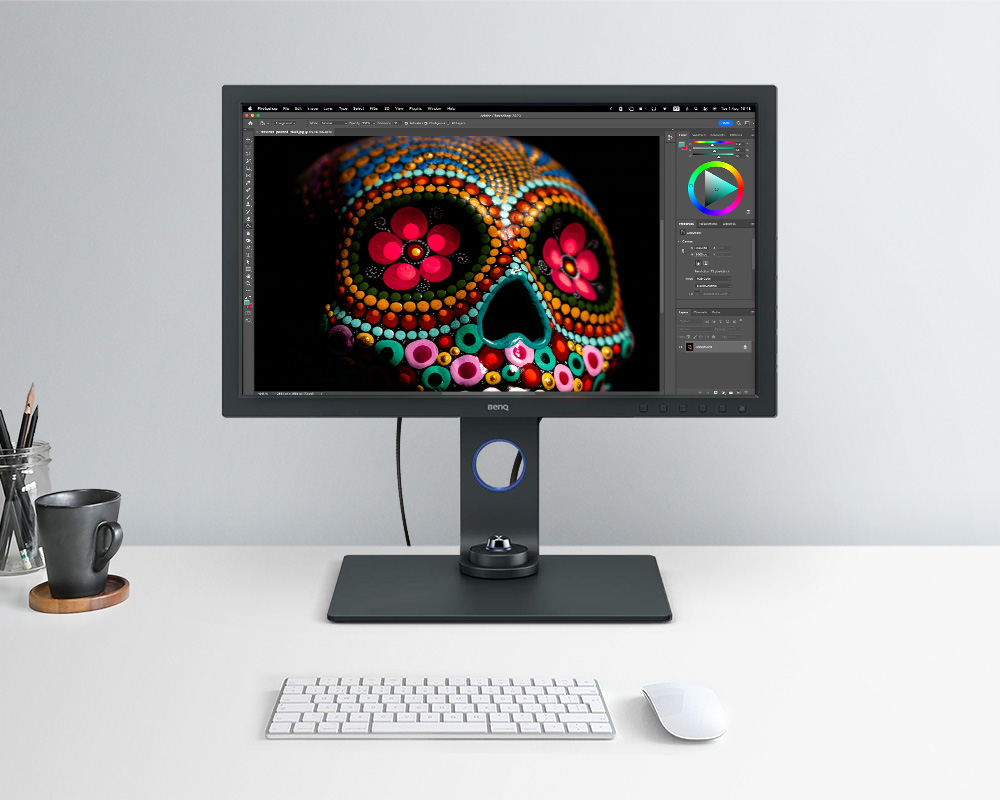
While still competitive, this makes it not as recommendable for photo or video editing for digital media as its main competitors, the Dell U2732QE, the Apple Display or even the LG-27UP850-W, all of which are above 95% DCI-P3.
Otherwise, it is a monitor with excellent performance, much cheaper than its 32-inch version, the BenQ PhotoVue SW321C, and with a higher pixel density, offering 163 ppi versus the 138 ppi of the 32″. This translates into better sharpness and detail when working with your photos.
One of its weakest points is its design. Nothing relevant to its performance, but the truth is that its thickness and wide bezels around it give it an aspect of a monitor from 5 or 10 years ago. However, it is very well built, very stable and has several accessories for photographers that can be added to it.
Is the BenQ PhotoVue SW271C worth it?
The perfect monitor for photographers and graphic designers working for print media. Keep in mind that it is a professional monitor at a much higher level than most monitors on the market, hence its price is also high.
3. LG-27UP600-W
- Size: 27″
- Resolution: 3840×2160
- Color gamut: 95% DCI-P3
- Stand: Not adjustable
Last price update on 2023-01-27. We earn a commission if you make a purchase, at no additional cost to you.
The monitor for photo editing with the best value for money
If there is one thing the best LG monitors are known for, it is for offering features and performance very close to those of the most premium monitors, but at a more accessible price, and in this sense, the LG 27UP600-W is a great example.
In terms of overall performance and price, the LG-27UP600-W is very close to the Dell UltraSharp U2723QE. For example, it offers the same maximum brightness (400 nits) and very similar color coverages as the Dell, reaching 95% of the DCI-P3 gamut (vs. 98% of the Dell) and 80% of the Adobe RGB gamut (vs. 89% of the Dell).
This makes it a very good choice for professional and amateur photographers who work mainly for digital media and have a tight budget, but do not want to give up a reliable monitor with professional features.
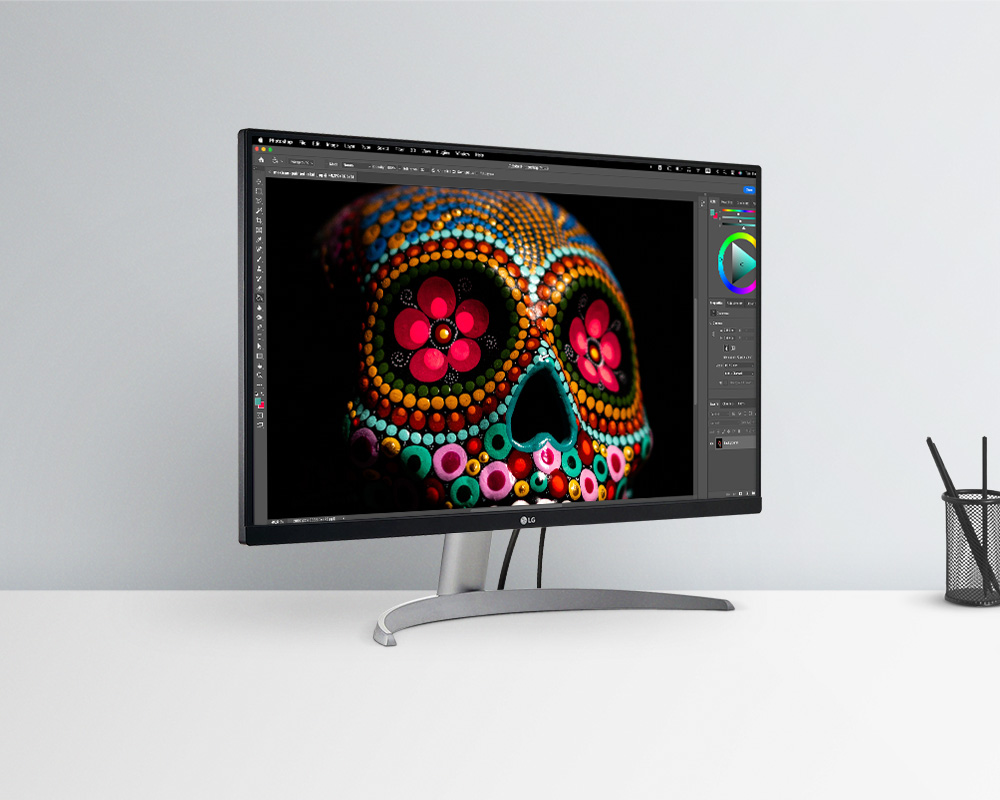
One step below in price would be the LG 27UL500-W (reviewed below), but this monitor, although aesthetically very similar, is far inferior in terms of color coverage, brightness, contrast, etc.
It is in design and materials that LG cuts corners to be able to offer such competitive prices. While the Dell UltraSharp U2723QE, the BenQ PhotoVue SW271C or the Apple Display use metal or aluminum feet, which give them great stability, the LG monitor is all plastic.
However, despite this, the monitor is very attractive in terms of design, and while it lacks ergonomic adjustments, it wouldn’t stop me from buying it, as you can purchase one of the best monitor arms separately for very little money.
Is the LG-27UP600-W worth it?
If you are on a tight budget, but want a monitor for photography that offers the most professional level of quality possible, this monitor is the best of the best.
4. LG 27UL500-W
Last price update on 2023-06-08. We earn a commission if you make a purchase, at no additional cost to you.
The best budget monitor for photography
This monitor does not outperform any of the monitors on this list, but it matches them in many respects, yet it is unrivaled in price.
It is not a monitor recommended for editing print photography or video editing, as it only covers 75% of the Adobe RGB gamut and 72% of the DCI-P3. However, its 4K resolution and >98% coverage of the sRGB space make it more than recommended for professional or amateur photographers on a tight budget who only publish on the Internet.
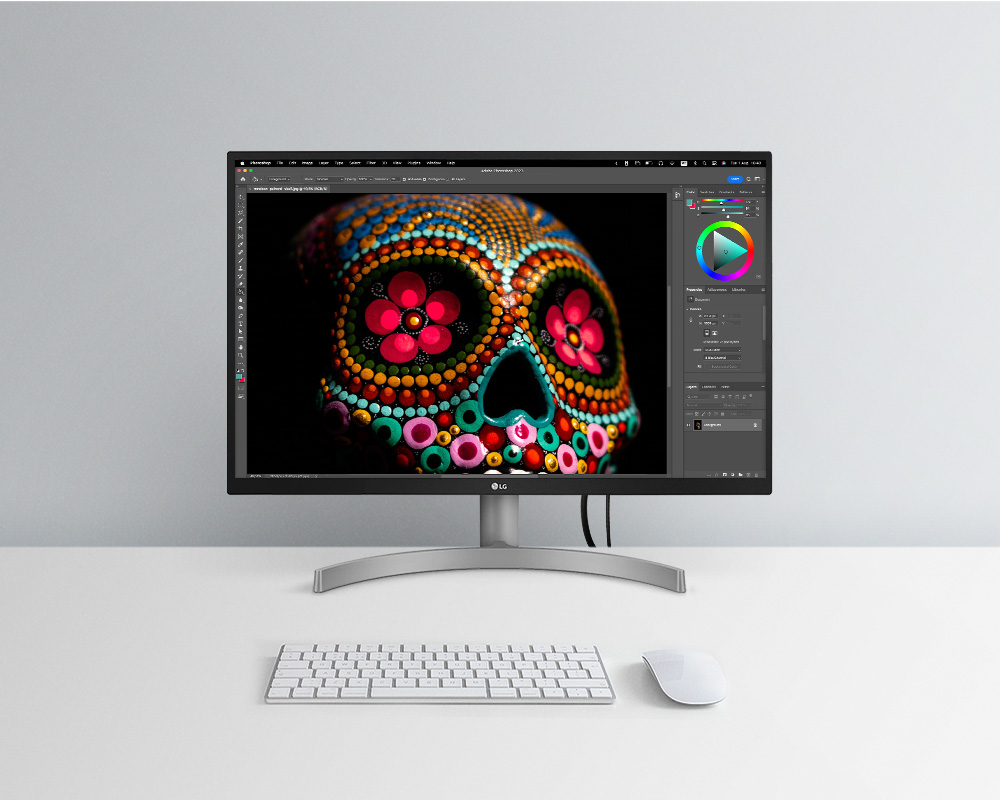
If you use it as an external monitor for a MacBook Pro or MacBook Air, for example, the difference between the brightness, contrast and color of the laptop screen and the LG 27UL500-W is noticeable. In that case, any other monitor on this list is a better choice.
Its connection options on the back are just enough and necessary to connect it to the computer: 2x HDMI 2.0, 1x Display Port 1.4 and audio out. No USB-C, Thunderbolt or other professional connections, just the basics.
Mind you, in terms of construction and design, it is very similar to the LG-27UP600-W, so I recommend buying it with an additional monitor arm or stand, as they are quite inexpensive. Check out our guide to the best monitor arms if you need help.
Is the LG 27UL500-W worth it?
Even if you’re on a tight budget, for me it’s worth making the effort and buying the LG-27UP600-W instead of this LG 27UL500-W, because the difference in color accuracy, brightness and contrast is remarkable. Nevertheless, the LG 27UL500-W delivers well on its promises and is a reliable and reliable monitor, as long as you don’t ask for more.
5. Apple Studio Display
- Size: 27″
- Resolution: 5120×2880
- Color gamut: 98.2% DCI-P3
- Glass type: Standard
- Stand: Tilt-Adjustable
Last price update on 2023-01-18. We earn a commission if you make a purchase, at no additional cost to you.
The best photo display for Mac
The Apple Studio Display offers excellent resolution, color gamut, brightness and contrast for photo editing, but it also adds a number of features that make it the best photo monitor for Mac.
Let’s make it clear from the beginning, there are photography monitors with very similar features and characteristics to the Apple Studio Display for much less price, as is the case of the Dell U2723QE reviewed above or the LG UltraFine 5K 27″.
Like the mentioned monitors, it offers 98.5% coverage of the DCI-P3 range, which makes it ideal for photo and video editing in general.

However, if you’re going to print your photos, the BenQ PhotoVue SW271C (reviewed above) has more features in this regard and a higher Adobe RGB spectrum coverage (99% vs. 85.2% of the Apple Studio Display), so it’s clearly better in this regard.
However, the Apple Studio Display brings features for Mac users that none of them offer, such as a 12 MP wide-angle camera, very good quality speakers, 600 nits of brightness and a design in line with that of the latest Macs.
Hence I only recommend it for Mac users.
On the back it has 3 USB-C and a Thunderbolt port, which is great, but if your plan was to connect older devices, you’ll need an adapter.
Is the Apple Studio Display worth it?
The Apple Studio Display is an excellent display if you want to keep all your devices within the Apple ecosystem and design, otherwise, you can save some serious money.
Top 5 best-selling monitors of 2025 that work for photo editing
Last price update on 2023-08-02. We earn a commission if you make a purchase, at no additional cost to you.
How to choose the best monitor for photography: 8 things to consider
In our guide on how to choose a monitor for photo editing I explain in detail what to look for when choosing your monitor for photography, but I’ll summarize them here:
Color accuracy:
Color accuracy is crucial to ensure that your photos are reproduced on the monitor as well as in the final digital prints.
The accuracy of a monitor is mainly expressed through the Delta E value, which is the difference between two color samples (the one on the screen and the one in the real world). The smaller the difference, the higher the accuracy.
| ΔE* | Accuracy |
| <1 | Excellent |
| 1 – 2 | Good |
| 2 – 4 | Normal |
| 4 – 5 | Enough |
| >5 | Bad |
Color gamut
Color gamut also plays a role in accuracy, since it is the number of colors that a monitor can display. Therefore, the wider the color gamut of your monitor, the more accurately you can display the colors in your images. Although there are several color gamuts, the most common are sRGB, Adobe RGB and DCI-P3.
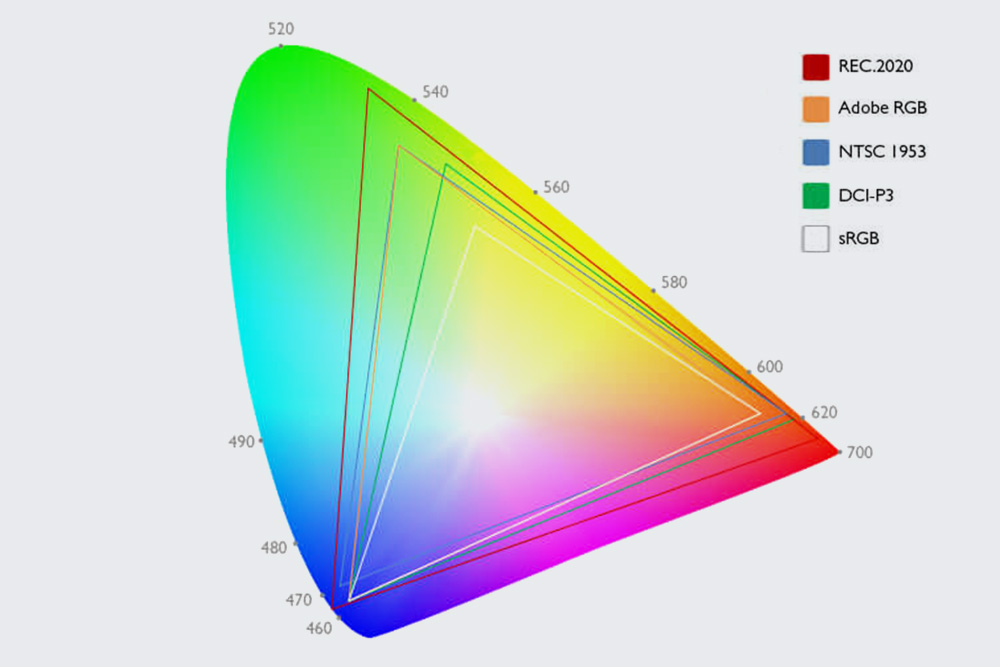
Recommendation:
All but the cheapest monitor on this list have achieved excellent accuracy (ΔE<1) in all tests performed, so you can be confident in choosing any of them.
Monitor size
Monitor size is essential for photo editing. A larger, high-resolution monitor offers more working space, allowing you to view several photos at once or edit large images in detail.
The ideal size is 27 inches and 4K or 5K resolution, providing quality without the feeling of being too close to the screen. However, larger monitors can take up more space and be more expensive, especially those specifically for professional photo editing for printing.
Recommendation:
All monitors on this list are high resolution 27″ screens, allowing you to edit photos, and even videos comfortably.
Resolution
The resolution of a monitor refers to the number of pixels it can display. The more pixels it has, the higher the definition of the image and the more detail you will see in your photos. However, it is important to consider the relationship between monitor size and resolution.
Two monitors with the same resolution, for example (2560 × 1440), will have different pixel densities (ppi) if one is larger than the other, since the same number of pixels is spread over a larger screen, as you can see below:
| Resolution | 24″ Monitor | 27″ Monitor | 32″ Monitor |
|---|---|---|---|
| 5K (5120×2880) | 245 ppi | 218 ppi | 184 ppi |
| 4K (3840×2160) | 184 ppi | 163 ppi | 138 ppi |
| 2K (2560×1440) | 122 ppi | 109 ppi | 92 ppi |
| 1080 (1920×1080) | 92 ppi | 82 ppi | 69 ppi |
Recommendation:
The monitor with the highest pixel density of this selection is the Apple Studio Display, with 218 PPI. The others have 163 PPI. However, it is difficult to find differences at the perceptual level.
Brightness
A monitor for photo editing should have sufficient brightness to allow clear viewing even in rooms with lots of natural light and possible reflections. Monitor brightness is measured in nits or cd/m2, and the higher this number, the better the performance against ambient light and reflections when viewing photos.
A monitor with at least 300 nits or 300 cd/m2 is enough for most home and office environments. However, if you want to use it in conjunction with your laptop screen, it is best to look for one that has a similar brightness.
Recommendation:
The monitor with the highest maximum brightness on this list is the Apple Studio Display, with 600 nits, the same as the latest MacBook Pro displays.
Viewing angles
The viewing angles of a monitor indicate from which positions the image can be viewed without noticeable changes in color or contrast. This is relevant if you are not looking at the monitor from the front or if you are sharing images with other people in the same room, as they may perceive them differently.
The angles are expressed in two figures: horizontal viewing angle/vertical viewing angle, e.g. 170°/160°, which means that the image starts to look different from those degrees from the center of the screen.
Viewing angles depend on the type of monitor panel. The main types of LCD panels are:
- IPS panels: Offer the widest viewing angles (178º/178º).
- VA panels: Achieve similar viewing angles to IPS (178º/178º).
- TN panels: Offer the widest viewing angles (178º/178º).
Recommendation:
All monitors in this list use IPS panels to ensure perfect viewing angles.
Contrast ratio
Contrast in a monitor refers to the difference between the brightest and darkest colors it can display. A higher contrast ratio means a wider range of colors that the monitor can display.
For example, a contrast ratio of 1000:1 indicates that the white color is 1000 times brighter than the black color the monitor can produce.
Recommendation:
The monitor with the best contrast in this list is the Dell U2723QE, with a ratio of 1200:1. The rest are around 1000:1 contrast ratio.
Ports and connections
The ports and connections that your monitor accepts can make your life easier, especially when you need to connect several devices at once, such as cameras, hard drives and other peripherals, and you don’t want to take up all the ports on your computer.
Recommendation:
The monitor that offers the most powerful ports is the Apple Studio Display, however, the most practical is the Dell U2723QE that offers more than a dozen ports to connect and/or charge all kinds of devices.
Ergonomic adjustments
If you are tall or suffer from back and joint pain after spending time in front of the computer, it is important to consider ergonomic adjustments. You can solve this problem by purchasing an articulating monitor arm (see our guide) or buying a monitor with multiple adjustment options.
If you plan to work with two screens, the monitor and the laptop, it is advisable to align them at the same height, for which it is also suggested to purchase a laptop stand (see our guide).
Recommendation:
The best on this list, in terms of ergonomics, are the Dell U2723QE and the BenQ PhotoVue SW271C. Either is an excellent choice.











